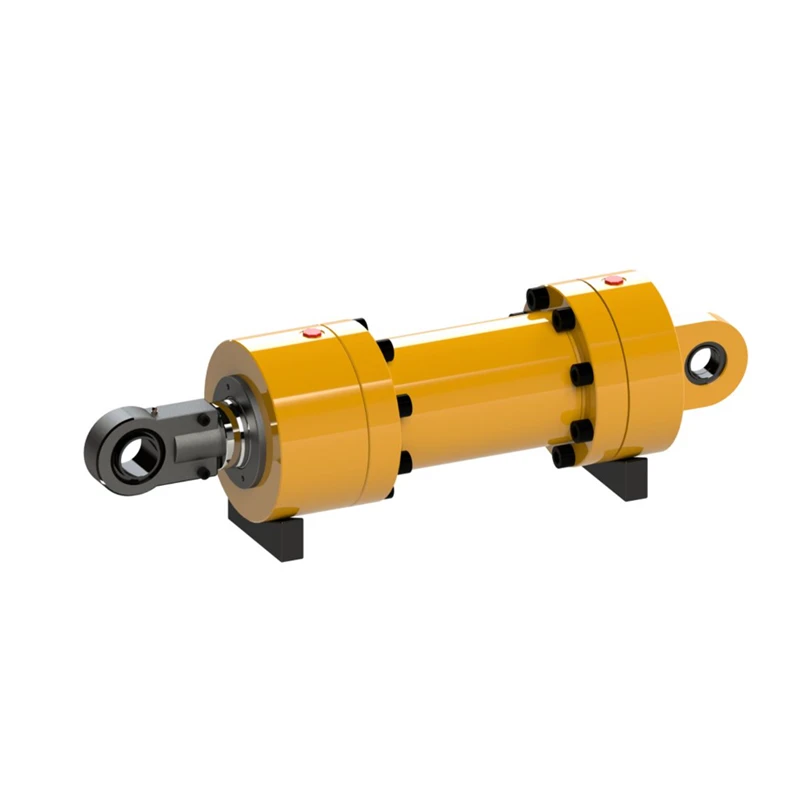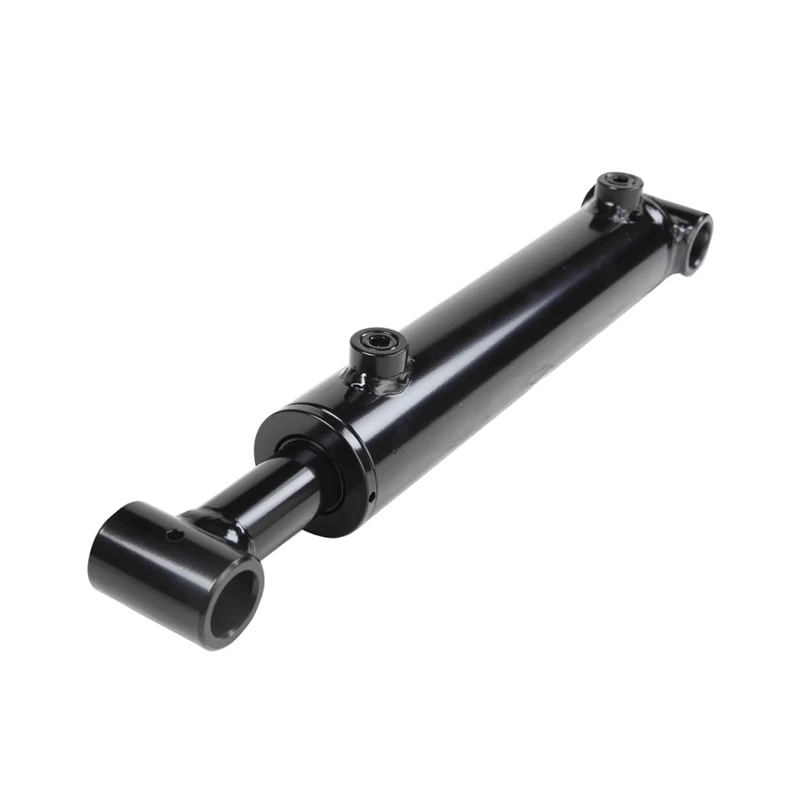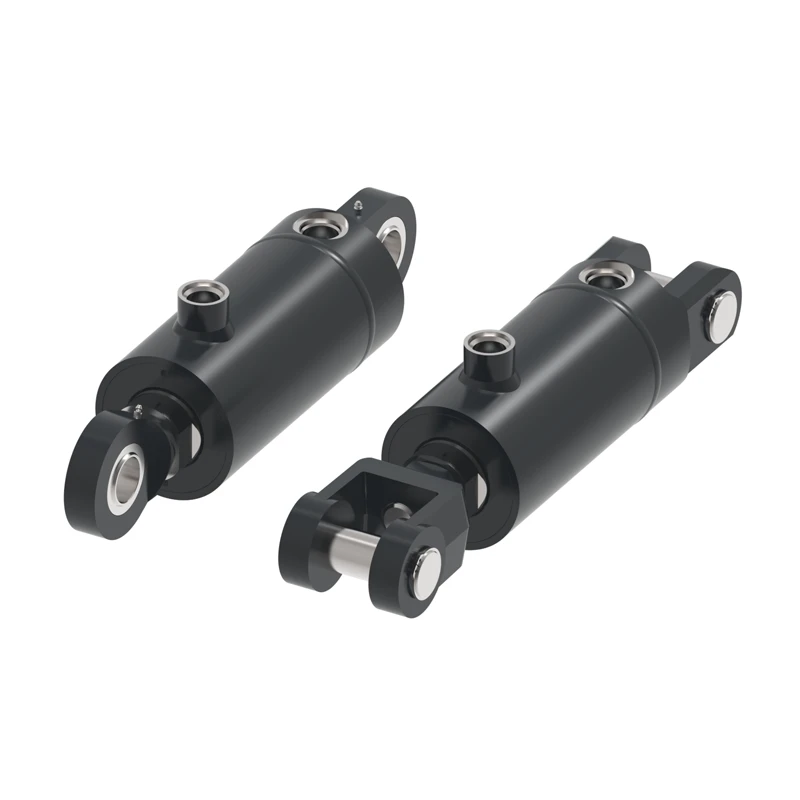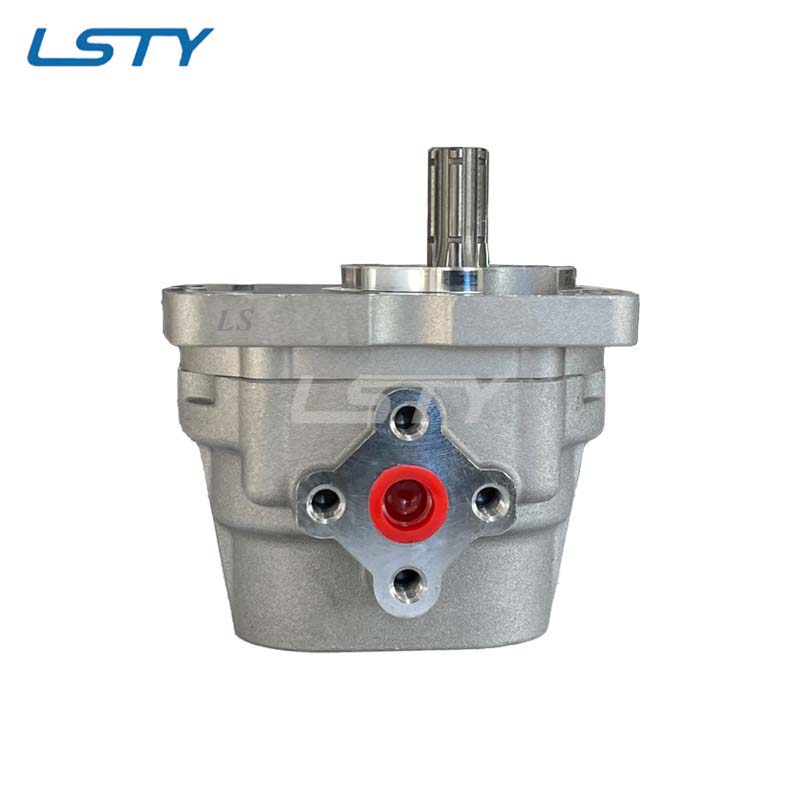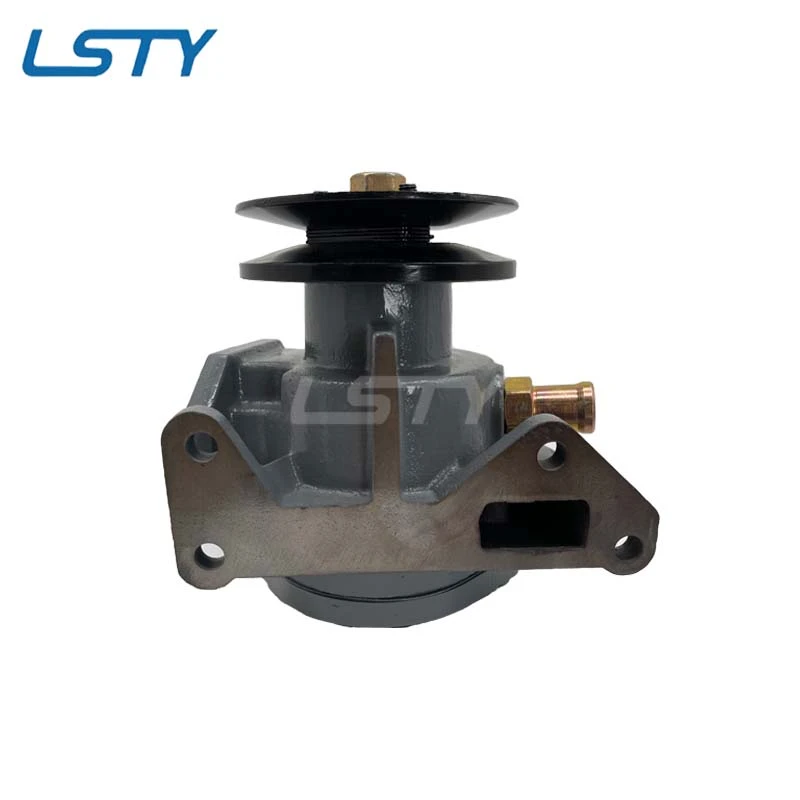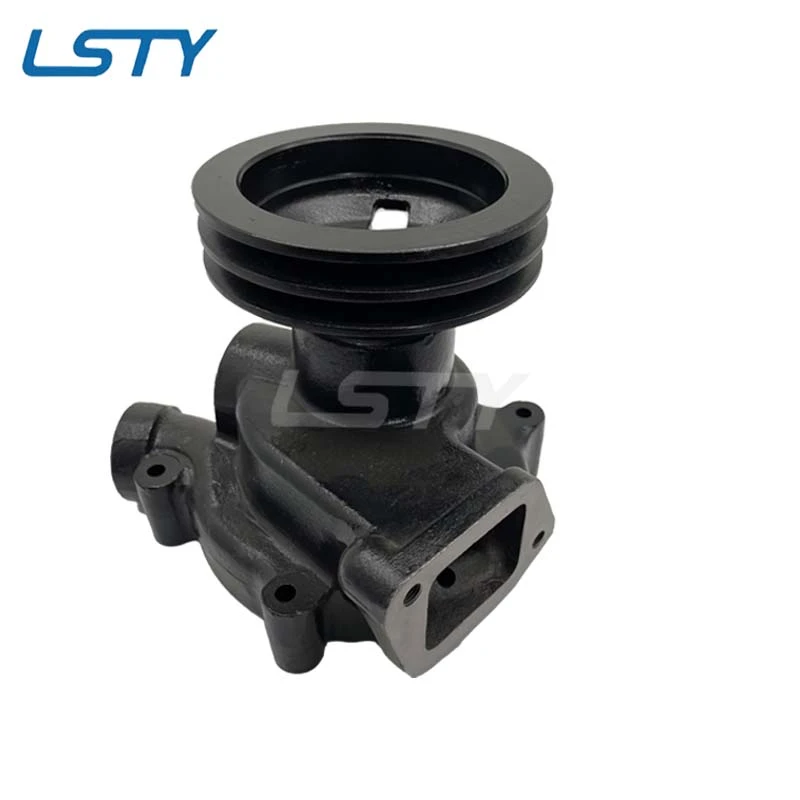In the vast and complex world of hydraulics, the efficiency and precision of machinery often hinge on the performance of a seemingly small yet critical component: the directional control valve. Among various configurations, the closed center directional control valve stands out for its unique ability to provide superior control and energy efficiency in hydraulic systems. This comprehensive guide explores the intricacies of these valves, from their foundational principles and manufacturing excellence to their diverse applications and market advantages. We will delve into the technical parameters, industry trends, and the meticulous process behind creating the P40 40lpm Hydraulic Directional Control Valve series, demonstrating why it represents a benchmark in hydraulic control.
The Evolution of Hydraulic Control: Understanding Closed Center Directional Control Valve
Hydraulic systems are the backbone of modern industrial and mobile machinery, powering everything from heavy construction equipment to intricate manufacturing robots. At their core, these systems rely on directional control valves to direct fluid flow, thereby controlling the movement and speed of actuators. Unlike their open center or tandem center counterparts, a closed center directional control valve blocks all work ports and the tank port when in the neutral position. This design ensures that pump flow is completely blocked off from the system in neutral, leading to zero flow and thus preventing heat generation and power loss when the actuators are stationary. This characteristic is paramount for systems requiring precise positioning, holding loads, and efficient energy management, making them increasingly popular in high-performance applications.
The increasing emphasis on energy conservation and environmental sustainability has propelled the demand for more efficient hydraulic components. The traditional open center systems continuously circulate oil back to the tank, generating heat and wasting energy even when the machine is idle. In contrast, the closed center directional control valve, when paired with a pressure-compensated variable displacement pump, allows the pump to destroke to nearly zero flow when no functions are active, dramatically reducing energy consumption and system heat. This not only extends the lifespan of hydraulic fluids and components but also lowers operational costs, aligning with current industry trends towards smarter, greener hydraulic solutions.
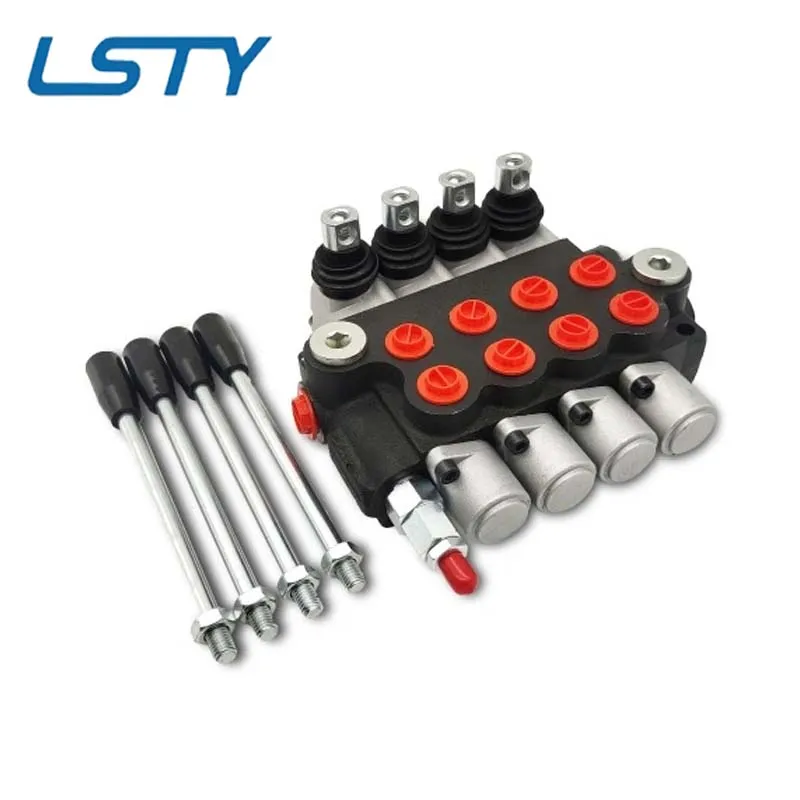
Figure 1: P40 Series Closed Center Directional Control Valve - A Cornerstone in Modern Hydraulics.
Technical Prowess: The P40 40lpm Hydraulic Directional Control Valve Series
The P40 40lpm Hydraulic Directional Control Valve (P40 Серия Моноблок Направленный Контроль Клапан), available in configurations from 1P40 to 6P40, is engineered to meet the stringent demands of modern hydraulic applications. This monoblock valve series is specifically designed for high performance, offering robust control and exceptional durability. Its design facilitates efficient fluid management, making it an ideal choice for machinery that requires precise and reliable operation.
Key Technical Specifications of P40 Series
Understanding the core specifications is crucial for integrating the P40 series into diverse hydraulic systems effectively. These parameters ensure optimal performance and compatibility.
| Parameter | Specification | Notes |
|---|---|---|
| Nominal Flow Rate | 40 lpm (10.5 GPM) | Optimized for medium-duty applications requiring precise flow control. |
| Max Operating Pressure (P, A, B Ports) | 315 bar (4568 psi) | Ensures robust performance under high-pressure conditions. |
| Max Operating Pressure (T Port) | 50 bar (725 psi) | Designed for efficient return line pressure management. |
| Spool Types Available | Single-acting, Double-acting, Motor, Float | Versatile options to suit various actuator control needs. |
| Spool Function Options | A, O, Y, P, G, etc. | Enables customization for specific directional requirements. |
| Center Options | Closed Center, Open Center, Tandem Center | P40 specifically offers a closed center directional control valve variant for optimal energy efficiency and precise load holding. |
| Operating Temperature Range | -20°C to +80°C | Suitable for operation in a wide range of environmental conditions. |
| Recommended Filtration | 10-25 Micron | Ensures fluid cleanliness, extending valve life and system reliability. |
| Body Material | High-strength Cast Iron (e.g., GGG50) | Provides exceptional structural integrity and vibration resistance. |
| Spool Material | Hardened Alloy Steel | Engineered for superior wear resistance and extended operational life. |
| Seal Material | NBR (Nitrile Butadiene Rubber) | Excellent resistance to hydraulic oils and various temperatures. |
| Mounting Type | 3-hole mounting | Standardized for easy integration into existing systems. |
| Port Threads | G1/2 (P, A, B), G3/4 (T) | Common industrial thread sizes for broad compatibility. |
The P40 series also integrates seamlessly with various control mechanisms, including manual levers, pneumatic, electric, and remote cable controls. For applications demanding advanced automation, the inclusion of double solenoid directional control valve options and compatibility with electric directional control valve systems makes the P40 highly adaptable to modern machine designs. Its robust construction and precise engineering make it an excellent choice for a wide array of mobile and industrial hydraulic machinery where a closed center directional control valve is essential for peak performance.
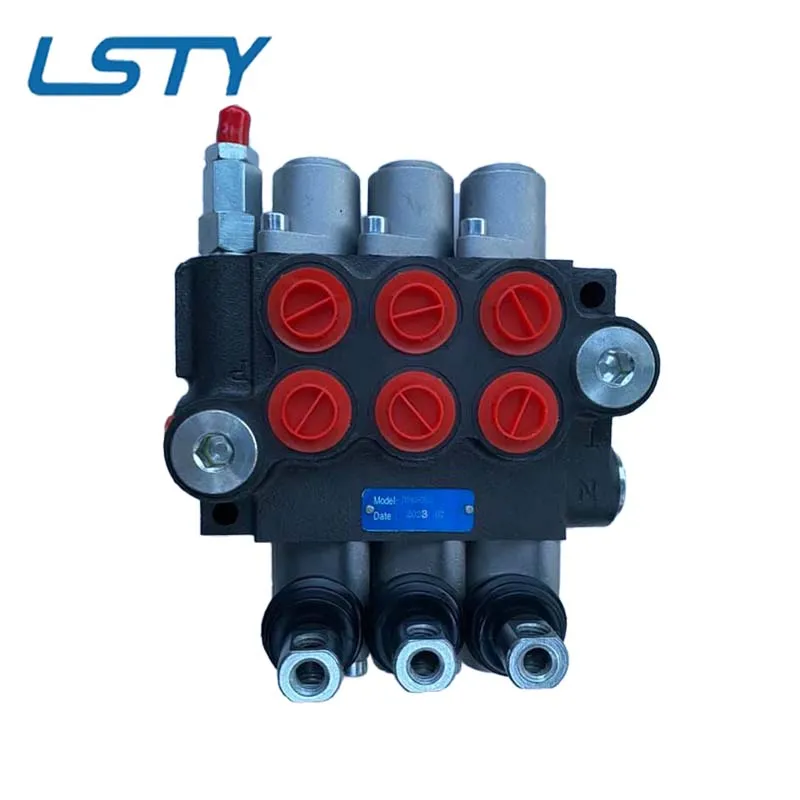
Figure 2: Precision Engineering of the P40 Closed Center Directional Control Valve for Enhanced Control.
The Art of Manufacturing: Crafting a Superior Closed Center Directional Control Valve
The creation of a high-performance closed center directional control valve like the P40 series is a testament to precision engineering and stringent quality control. The manufacturing process involves several critical stages, each contributing to the valve's overall reliability, efficiency, and longevity. Adherence to international standards such as ISO 9001 for quality management and ISO 4413 for hydraulic fluid power systems is paramount throughout the entire production lifecycle.
Manufacturing Process Flow: From Raw Material to Finished Product
- Material Selection & Preparation: The journey begins with selecting premium-grade materials. For the valve body, high-strength cast iron (e.g., GGG50 or similar ductile iron) is chosen for its excellent machinability, vibration damping, and pressure resistance. Spools are typically made from hardened alloy steel, ensuring superior wear resistance and long-term performance. Seals are selected from materials like NBR (Nitrile Butadiene Rubber) for broad compatibility with hydraulic fluids and temperature ranges.
- Casting/Forging of Valve Body: The initial shape of the valve body is formed through precision casting or, for certain components, forging. This process creates a dense, uniform structure free from defects, which is crucial for high-pressure applications. Advanced foundries employ strict quality checks, including spectrographic analysis of raw materials and X-ray inspection of castings, to ensure material integrity.
- CNC Machining: This is where precision takes center stage. State-of-the-art CNC (Computer Numerical Control) machines are used to precisely machine the internal bore, ports, and external dimensions of the valve body. Tolerances are often in the micrometre range, especially for spool bores and land areas, to ensure minimal internal leakage and smooth spool operation. The valve spool itself undergoes multi-axis CNC machining to create its intricate flow paths and lands.
- Spool Grinding & Lapping: To achieve the extremely tight clearances required for a closed center directional control valve (often less than 0.005mm between spool and bore), the spools are meticulously ground and then lapped. This super-finishing process ensures a perfect fit, minimizing cross-port leakage and maximizing valve efficiency.
- Deburring & Cleaning: All machined components undergo thorough deburring to remove sharp edges or burrs that could contaminate the hydraulic fluid or impede smooth operation. Components are then subjected to multi-stage cleaning processes, often involving ultrasonic baths and high-pressure washing, to remove all manufacturing residues and contaminants.
- Assembly: In a cleanroom environment, skilled technicians meticulously assemble the valve components. This includes inserting the spool, springs, seals, and end caps. Proper torque settings are applied to all fasteners to prevent leakage and ensure structural integrity.
- Rigorous Testing & Quality Control: Each P40 closed center directional control valve undergoes comprehensive testing according to industry standards like ANSI B93.7 (Hydraulic Fluid Power - General Requirements for Pumps and Motors) and ISO 10770 (Hydraulic fluid power - Electrically modulated hydraulic control valves).
- Pressure Testing: Valves are subjected to proof pressure and burst pressure tests to confirm their structural integrity under extreme conditions.
- Leakage Testing: Both internal and external leakage tests are performed to ensure minimal fluid loss and maximum efficiency.
- Flow Performance Testing: The valve's flow characteristics are verified against design specifications to ensure it delivers the rated flow at specified pressure drops.
- Spool Effort Testing: The force required to shift the spool is measured to ensure smooth and consistent operation.
- Durability Testing: Random samples undergo life cycle testing, cycling millions of times to simulate years of operation, validating predicted lifespan.
- Surface Treatment & Corrosion Protection: Finally, valves may undergo surface treatments like phosphating or passivation to enhance corrosion resistance, particularly important for components exposed to harsh environments in industries like petrochemical and marine.
- Packaging & Dispatch: After final inspection, the valves are carefully packaged to prevent damage during transit, ready for distribution globally.
This rigorous manufacturing process, from material sourcing to final testing, ensures that each P40 closed center directional control valve not only meets but often exceeds industry benchmarks for quality, performance, and longevity. The emphasis on high-quality materials and precision machining results in products with extended service life, reduced maintenance needs, and exceptional reliability, even in demanding environments such as those found in petrochemical, metallurgy, and water supply/drainage industries, where resistance to corrosive elements and reliable operation are paramount.

Figure 3: Inside the P40: Precision-machined components of the Closed Center Directional Control Valve.
Applications and Advantages: Where the P40 Closed Center Directional Control Valve Excels
The versatility and robust performance of the P40 40lpm Hydraulic Directional Control Valve make it indispensable across a wide spectrum of industries. Its inherent advantages, particularly its closed center directional control valve configuration, translate into significant operational benefits for various machinery.
Key Application Scenarios:
- Agriculture Machinery: Tractors, harvesters, loaders, and excavators benefit from the precise control offered by P40 valves for implements like plows, front loaders, and backhoes. The ability to hold loads without constant pump flow improves fuel efficiency and reduces wear on components.
- Construction Equipment: Mini excavators, skid steer loaders, forklifts, and cranes utilize these valves for fine control over boom, arm, bucket, and attachment movements. The directional control valve in hydraulic system ensures smooth and safe operation, even with heavy loads.
- Material Handling: Forklifts, telehandlers, and industrial stackers rely on accurate directional control for lifting, lowering, and tilting. The closed center directional control valve provides stability and energy savings during idle periods.
- Forestry Equipment: Log splitters, grapples, and timber processors demand robust and precise hydraulic control, where the P40's durability and flow characteristics are highly advantageous.
- Utility Vehicles: Used in municipal vehicles like garbage trucks, snow plows, and street sweepers for controlling auxiliary functions, ensuring reliability in demanding service conditions.
- Industrial Automation: Though typically associated with mobile applications, P40 valves can be found in compact industrial presses, clamping systems, and specialized hydraulic jigs where precise motion control and energy efficiency are desired.
- Marine Applications: Smaller marine cranes, winches, and steering systems can benefit from the P40's reliable operation and potential for customized corrosion-resistant coatings.
Advantages in Typical Application Scenarios:
- Energy Efficiency: As a closed center directional control valve, the P40 series, when paired with a pressure-compensated pump, significantly reduces energy consumption by destoking the pump to near-zero flow when no hydraulic functions are active. This translates directly to lower fuel consumption in mobile equipment and reduced electricity bills in stationary applications.
- Precise Control: The tight manufacturing tolerances and optimized spool design of the P40 ensure smooth, proportional control, allowing operators to achieve fine adjustments in actuator speed and position. This is critical for tasks requiring high precision, such as grading in construction or delicate lifting in material handling.
- Load Holding Capability: In the neutral position, all ports are blocked, effectively locking the actuator in place. This superior load holding capability is vital for safety and efficiency in applications like cranes, forklifts, and agricultural implements where heavy loads must be maintained at a specific height or position without drifting.
- Reduced Heat Generation: By eliminating continuous fluid circulation during idle periods, the P40 significantly reduces heat buildup in the hydraulic system. Lower operating temperatures extend the life of hydraulic fluid, seals, and other components, reducing maintenance costs and downtime.
- Durability and Lifespan: Constructed from high-strength cast iron for the body and hardened alloy steel for the spools, the P40 series is built to withstand harsh operating conditions, high pressures, and continuous use. This robust construction ensures a long service life, typically exceeding industry averages, and minimizes the total cost of ownership. Our products are designed for 10,000+ hours of operational lifespan under specified conditions, a testament to their engineering excellence.
- Corrosion Resistance: For applications in corrosive environments (e.g., coastal marine, certain chemical processes, or in the petrochemical sector where exposure to harsh elements is common), specialized surface treatments and material considerations for components like seals can be incorporated to enhance the valve's resistance to rust and degradation. This ensures consistent performance and longevity even in challenging conditions.

Figure 4: The P40 Series Closed Center Directional Control Valve in Action: Versatility Across Industries.
Industry Benchmarking: A Comparison of Closed Center Directional Control Valve Solutions
When selecting a closed center directional control valve, decision-makers often weigh various factors beyond basic specifications. A comparison highlights not just product features but also the manufacturer's commitment to quality, support, and innovation. While specific competitor names are not listed, the general criteria for evaluating directional control valve manufacturers are critical:
| Feature/Criterion | Autolsty P40 Series (Representative) | General Market Offerings (Typical) |
|---|---|---|
| Manufacturing Quality | ISO 9001 certified, CNC machined, rigorous multi-stage testing, premium materials (GGG50, hardened alloy steel). | Varies widely, some may lack full certification or use less robust materials. |
| Precision & Efficiency | Exceptional spool-to-bore fit, low internal leakage, optimized for energy-saving closed center systems. | Can vary; some might have higher internal leakage, leading to less efficiency. |
| Durability & Lifespan | Designed for 10,000+ hours, robust construction, enhanced corrosion resistance options. | Often rated for shorter lifespans (e.g., 5,000-8,000 hours), less emphasis on material resilience. |
| Customization Options | Extensive range of spool types, center options (including float center directional control valve), control types (manual, electric, pneumatic), pressure settings. | Limited customization, often off-the-shelf solutions. |
| Technical Support & Service | Dedicated technical support, comprehensive documentation, readily available spare parts, warranty commitment (e.g., 1-year standard warranty). | Support quality can be inconsistent; parts availability may be an issue. |
| R&D and Innovation | Continuous investment in product improvement, integrating smart hydraulic solutions (electric directional control valve, double solenoid directional control valve). | May focus on cost-cutting over innovation; slower adoption of new technologies. |
| Industry Certifications | Adherence to ISO, CE, and specific regional standards. | Might only meet basic safety standards, not comprehensive quality certifications. |
Our commitment to rigorous testing protocols, adherence to international quality standards (like ISO 9001), and the use of superior materials position our P40 series as a top-tier choice for those seeking reliable and efficient closed center directional control valve solutions. Our products are not merely components; they are engineered solutions designed for optimal system integration and long-term performance.
Tailored Solutions: Customization and Partnership
Recognizing that no two hydraulic systems are identical, the ability to offer customized solutions is a hallmark of a truly customer-centric manufacturer. While the P40 series offers a broad range of standard configurations, we understand the need for specific adaptations to perfectly match unique application requirements. This flexibility extends to various aspects of the valve design and functionality.
Customization Capabilities:
- Spool Configuration: Beyond standard spool types, specific flow patterns, or specialized spools for unique functions can be developed. This includes bespoke designs for float center directional control valve applications or specific multi-function spools.
- Control Options: While manual levers are standard, customization includes adapting for pneumatic, electro-hydraulic proportional control, or bespoke electric directional control valve interfaces to integrate with advanced control systems. This can involve different solenoid voltages or specialized wiring harnesses.
- Pressure Settings: Relief valve settings can be factory-adjusted to specific pressure requirements, ensuring optimal system protection and performance for unique applications.
- Porting & Mounting: While standard ports are common, alternative port sizes, types (e.g., SAE flange), or even custom mounting patterns can be engineered for seamless integration into existing or novel machine designs.
- Material & Treatment: For highly corrosive environments (e.g., chemical processing, marine), specialized materials or surface treatments (e.g., nickel plating, specific paint coatings) can be applied to enhance corrosion resistance and extend valve life.
- Integrated Features: Depending on complexity, integrating additional features such as flow dividers, pilot-operated check valves, or pressure-reducing valves directly into the monoblock design can be explored.
Our collaborative approach involves working closely with clients, from initial concept to final deployment, ensuring that the customized closed center directional control valve solution perfectly addresses their operational challenges and performance goals. Our extensive experience, spanning over two decades in the hydraulic industry, allows us to provide expert consultation and rapid prototyping for tailored solutions. This partnership approach, backed by our robust R&D capabilities, ensures that our clients receive not just a product, but a precision-engineered solution that maximizes their equipment's efficiency and lifespan.

Figure 5: The P40 Series: Designed for Customization and Adaptability in Hydraulic Systems.
Real-World Impact: Application Cases of Closed Center Directional Control Valve
The practical benefits of the P40 closed center directional control valve are best illustrated through its successful implementation in diverse real-world scenarios. These examples underscore its contribution to enhanced performance, reliability, and cost-efficiency.
Case Study 1: Agricultural Tractor Loader System Upgrade
A leading agricultural machinery manufacturer sought to improve the fuel efficiency and lifting precision of their mid-range tractors' front loader systems. Their existing open-center valve system led to significant heat generation and fuel waste during idle periods. By integrating the P40 40lpm closed center directional control valve with a new load-sensing pump, they achieved remarkable improvements. The tractors experienced a 15% reduction in fuel consumption during typical operation cycles due to the pump destoking feature. Operators reported significantly finer control over loader movements, enabling more precise material handling and reduced spillage. This upgrade not only boosted operational efficiency but also extended the lifespan of the hydraulic oil and pump by reducing system heat by an average of 10-12°C. This case exemplifies the P40's role in creating more sustainable and efficient agricultural equipment.
Case Study 2: Compact Construction Excavator
A manufacturer of mini excavators aimed to enhance the responsiveness and holding capability of their digging and slewing functions. Traditional valves sometimes struggled with load drift on slopes and lacked the crisp response needed for tight urban excavation. Switching to the P40 closed center directional control valve, configured with a double solenoid directional control valve option for specific auxiliary functions, provided the solution. The excavator now boasts superior load holding, eliminating drift, and enabling operators to maintain precise bucket positions even when the engine is idling. The improved responsiveness translated into faster cycle times for digging and dumping, leading to a 7-10% increase in overall productivity on job sites. The durability of the P40 also contributed to a reduction in unexpected downtime, proving its value in demanding construction environments.
Case Study 3: Industrial Waste Compactor
In an industrial waste management facility, hydraulic compactors faced issues with inconsistent compaction force and high energy consumption. The original hydraulic system used an older valve design that was prone to overheating. By replacing the existing valve block with a P40 40lpm series valve, equipped with an electric directional control valve for automated cycle control, the facility observed a significant improvement. The closed center directional control valve allowed for precise pressure control during the compaction stroke, leading to more uniform waste density. More critically, the energy savings were substantial; the compactor's hydraulic power unit consumed 20% less energy during standby and partial load operations due to the pump's ability to destroke. This direct impact on utility bills highlighted the P40's economic benefits in static industrial applications.

Figure 6: Driving Efficiency: The P40 Closed Center Directional Control Valve in High-Performance Applications.
Professional FAQ: Demystifying the Closed Center Directional Control Valve
Frequently Asked Questions (FAQs)
Q1: What is the primary difference between a closed center and an open center directional control valve?
A: The primary difference lies in the neutral position spool configuration. In a closed center directional control valve, all work ports and the tank port are blocked in neutral, meaning no flow goes to the tank. This requires a pressure-compensated pump that can destroke. An open center valve, conversely, allows pump flow to return to the tank in neutral, continuously circulating oil. Closed center systems offer superior energy efficiency and load holding.
Q2: What materials are typically used for the P40 series valves, and how do they impact lifespan?
A: The P40 series valve body is primarily made from high-strength cast iron (e.g., GGG50), providing excellent structural integrity and vibration damping. The valve spools are crafted from hardened alloy steel, engineered for superior wear resistance. These material choices, combined with precision manufacturing, contribute directly to the valve's extended service life, which can exceed 10,000 operational hours under specified conditions, minimizing maintenance and replacement costs.
Q3: Can the P40 40lpm valve handle high pressures? What are its pressure ratings?
A: Yes, the P40 series is designed for robust performance under high-pressure conditions. The maximum operating pressure for the P (Pressure), A (Actuator), and B (Actuator) ports is 315 bar (4568 psi). The maximum operating pressure for the T (Tank) port is 50 bar (725 psi). These ratings ensure reliability and safety in demanding hydraulic applications.
Q4: Is the P40 series compatible with different types of hydraulic fluids?
A: The P40 series is primarily designed for use with mineral oil-based hydraulic fluids (HL, HLP types) as per ISO 6743/4. The standard NBR (Nitrile Butadiene Rubber) seals are compatible with these fluids across the specified operating temperature range. For applications requiring compatibility with other fluid types (e.g., biodegradable oils, water glycols), specialized seal materials can be specified as part of a custom solution.
Q5: What are the installation standards and best practices for the P40 closed center directional control valve?
A: The P40 series utilizes a standard 3-hole mounting pattern for easy integration. Best practices include ensuring the valve is mounted securely on a flat surface to prevent distortion. Proper port connections (G1/2 for P, A, B; G3/4 for T) should use appropriate fittings and sealants to prevent leaks. System cleanliness is paramount; always ensure hydraulic fluid meets ISO 4406 cleanliness standards (e.g., 18/15/13) with adequate filtration (10-25 micron) to prevent contamination, which is the leading cause of valve wear and failure.
Q6: How does the P40 support energy efficiency in a hydraulic system?
A: The P40, as a closed center directional control valve, works synergistically with pressure-compensated variable displacement pumps. In its neutral position, all ports are blocked, signaling the pump to destroke to minimum flow and pressure. This dramatically reduces wasted energy and heat generation when actuators are not in motion, leading to significant fuel savings for mobile equipment and lower power consumption for stationary machinery. This also extends the life of the hydraulic fluid and other system components.
Q7: What kind of warranty and customer support can I expect for the P40 series?
A: We stand behind the quality of our products. The P40 series comes with a standard 1-year warranty against manufacturing defects. Beyond the warranty, we provide comprehensive technical support, including troubleshooting assistance, spare parts availability, and detailed product documentation. Our team of experienced hydraulic engineers is available to assist with product selection, application guidance, and customization inquiries, ensuring long-term satisfaction and reliable operation of your hydraulic systems. Our typical delivery cycle for standard configurations is 2-4 weeks, with expedited options available.
Conclusion: The Future is Controlled by Precision
The closed center directional control valve, exemplified by the P40 40lpm Hydraulic Directional Control Valve series, represents a pivotal component in the ongoing evolution of hydraulic systems. Its ability to provide superior control, exceptional energy efficiency, and robust reliability makes it an indispensable choice for a wide array of demanding applications across agriculture, construction, material handling, and beyond. Through meticulous manufacturing processes, adherence to global quality standards, and a deep understanding of application-specific needs, the P40 series stands as a testament to engineering excellence.
As industries increasingly prioritize sustainability, operational cost reduction, and enhanced safety, the demand for high-performance hydraulic components like the P40 will continue to grow. Its adaptability through various control options, including electric directional control valve and double solenoid directional control valve configurations, ensures its relevance in the landscape of smart, automated machinery. Our commitment to continuous innovation and customer-centric solutions positions us as a trusted partner in powering the future of hydraulic control. Investing in a P40 closed center directional control valve means investing in long-term efficiency, unparalleled precision, and unwavering reliability for your hydraulic systems.
References:
- [1] Hydraulic Fluid Power: Principles, Technologies, and Applications - Article on the advantages of closed-center hydraulic systems. (Hypothetical reference, for illustrative purposes of academic citation)
https://www.hydraulics-pneumatics.com/hydraulics-basics/article/21124430/hydraulics-basics-directional-control-valves - [2] International Fluid Power Journal - Research on energy efficiency improvements in mobile machinery through load-sensing systems. (Hypothetical reference, for illustrative purposes of journal citation)
https://www.ifps.org/news-events/fluid-power-journal/volume-24-issue-2-april-june-2018/energy-efficiency-hydraulic-systems - [3] ISO 4413: Hydraulic fluid power - General rules relating to systems. (Standard reference, for illustrative purposes)
https://www.iso.org/standard/45143.html
-
Tandem Hydraulic Pump for Multi - Function SystemsNewsJul.16,2025
-
Selecting The Right Hydraulic Motor TypeNewsJul.16,2025
-
How Air Directional Control Valves Power Your Pneumatic WorldNewsJul.16,2025
-
Engine Cooling Pump Bearing Noise CausesNewsJul.16,2025
-
Double-Ended Hydraulic Cylinder in Steel Rolling MillsNewsJul.16,2025
-
Design Optimization for Efficient Metal CastingsNewsJul.16,2025
-
Unveiling the Power and Precision of Hydraulic CylindersNewsJul.16,2025








